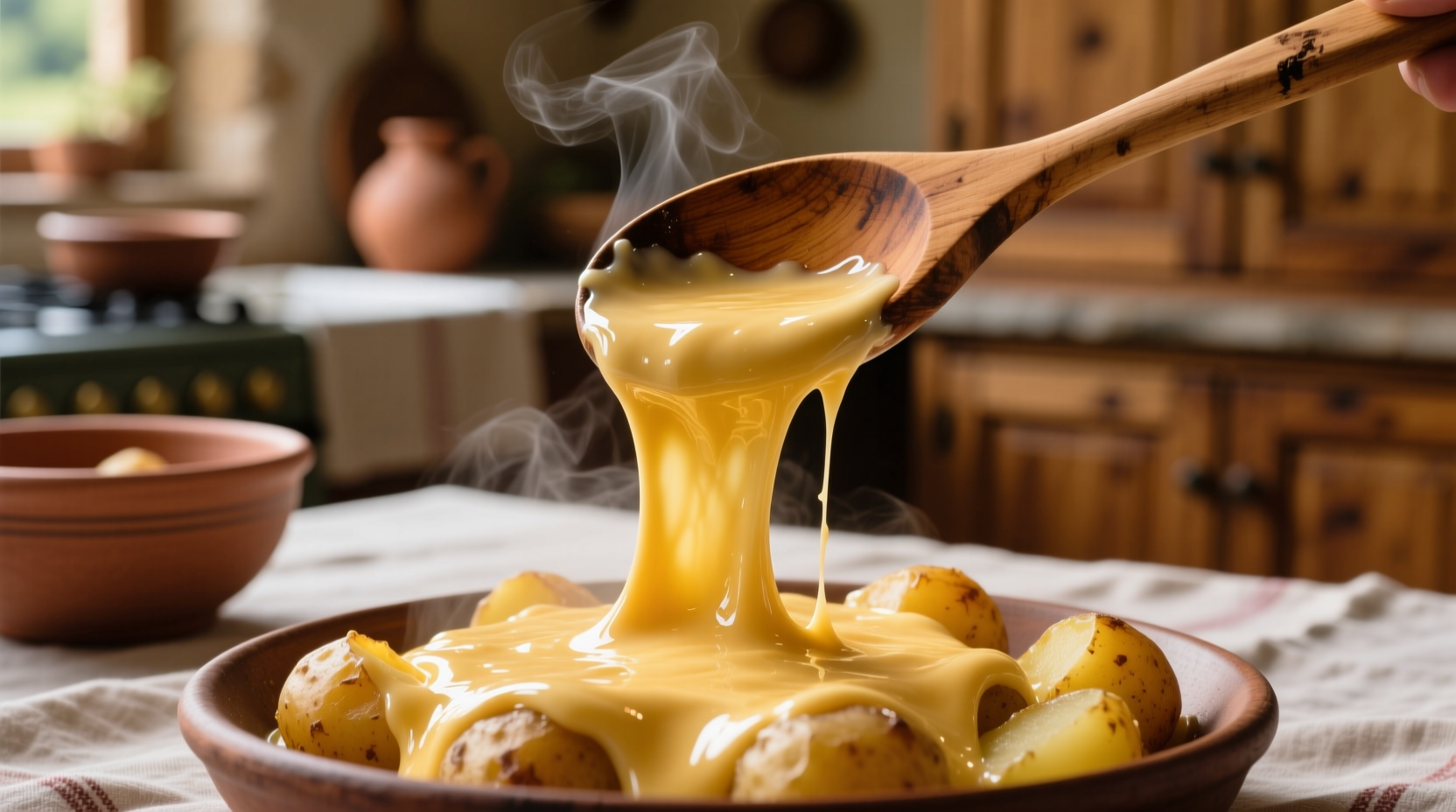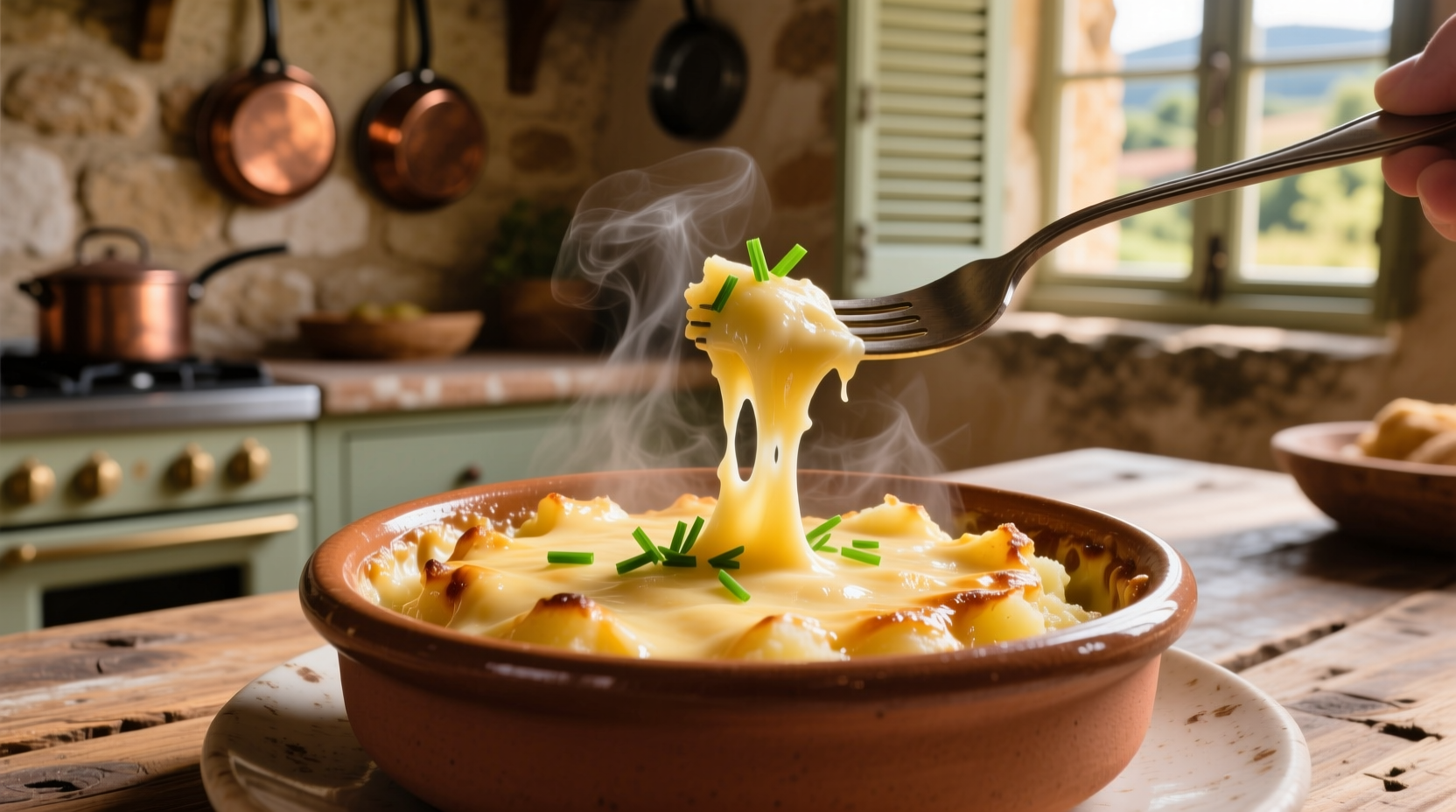Discover the secrets behind one of France's most beloved comfort foods. Potato aligot transforms simple ingredients into a luxuriously smooth, stretchy cheese-potato blend that's become a culinary icon of the Aubrac region. This definitive guide provides everything you need to recreate this traditional French specialty with confidence, whether you're a beginner or experienced home cook.
The Origins and Evolution of Potato Aligot
Understanding potato aligot's history helps appreciate why technique matters. This dish emerged in the 15th century among Aubrac region shepherds in southern France, who needed hearty, portable meals during long months tending flocks. Originally made with local Tomme cheese and whatever potatoes were available, aligot evolved from peasant food to national treasure.
| Historical Period | Key Developments | Traditional Ingredients |
|---|---|---|
| 15th-18th Century | Created by Aubrac shepherds as portable meal | Local Tomme cheese, boiled potatoes, garlic |
| 19th Century | Spread to regional farms and villages | Added butter for smoother texture |
| Mid-20th Century | Recognized as regional specialty | Cream incorporated for elasticity |
| 21st Century | Protected geographical indication status | Strict ingredient standards established |
According to the French Ministry of Agriculture's documentation on regional specialties, authentic aligot de l'Aubrac received protected geographical indication status in 2015, cementing its cultural importance and establishing specific production standards.
Essential Ingredients for Authentic Potato Aligot
The magic of potato aligot lies in its simplicity—just five core ingredients working in perfect harmony. Substitutions dramatically affect the final texture, so understanding each component's role is crucial.
Potato Selection Matters Most
Not all potatoes behave the same when making aligot. High-starch varieties like Bintje or Charlotte (common in France) create the ideal texture. In the United States, Russet or Yukon Gold potatoes work best. The starch content directly impacts the dish's signature stretchiness.
Cheese: The Heart of Aligot
Traditional aligot uses Tomme cheese from the Aubrac region, but several alternatives work well:
- Tomme de Laguiole (authentic choice with nutty flavor)
- Cantal (firm French mountain cheese)
- Young Laguiole (milder alternative)
- Fontina (acceptable substitute outside France)
Avoid pre-shredded cheeses, which contain anti-caking agents that prevent proper melting. Always grate cheese yourself from a fresh block for optimal results.

Step-by-Step Preparation Guide
Mastering potato aligot requires understanding the precise sequence and timing. Follow these steps for perfect results:
Equipment Essentials
- Heavy-bottomed pot (for even heating)
- Wooden spoon (traditional tool for mixing)
- Ricer or food mill (critical for smooth potatoes)
- Sharp knife (for precise cheese grating)
Perfect Potato Preparation
- Peel and cut 2 lbs (900g) potatoes into uniform 1-inch cubes
- Cook in salted water until fork-tender (15-18 minutes)
- Crucial step: Drain thoroughly and return to hot pot for 2 minutes to evaporate excess moisture
- Pass through ricer directly into mixing bowl
Creating the Signature Stretch
- Heat 1 cup (240ml) cream and 2 cloves minced garlic until steaming (do not boil)
- Add potatoes to cream mixture, stirring constantly with wooden spoon
- Gradually incorporate 8 oz (225g) grated cheese in small handfuls
- Mix vigorously in circular motion until smooth and elastic (5-7 minutes)
- Test consistency: should stretch 6-8 inches when lifted with spoon
Troubleshooting Common Aligot Problems
Even experienced cooks encounter issues with aligot. Understanding these common problems ensures success:
When Aligot Becomes Too Thick
If your mixture feels stiff and won't stretch:
- Add warm cream, 1 tablespoon at a time, mixing thoroughly between additions
- Return to low heat for 30 seconds to help emulsify
- Continue mixing vigorously until elasticity returns
When Aligot Breaks or Becomes Grainy
This happens when cheese overheats or is added too quickly:
- Immediately remove from heat
- Add 1-2 tablespoons cold cream while mixing vigorously
- If severely broken, start with fresh warm potatoes and gradually incorporate the broken mixture
Traditional Serving Methods and Pairings
Authentic aligot follows specific serving traditions that enhance the experience:
Proper Temperature and Presentation
Serve immediately while hot (160-170°F / 70-77°C). Traditional presentation involves:
- Placing in warm ceramic bowl
- Creating a well in center for melted butter
- Sprinkling with fresh parsley
Ideal Food Pairings
Aligot traditionally accompanies:
- Roasted meats: Particularly Toulouse sausage (saucisse de Toulouse)
- Simple green salad: With vinaigrette to cut richness
- French country wine: Cahors or Madiran red wines
According to culinary anthropologists at the University of Toulouse, aligot's cultural significance extends beyond taste—it's traditionally served at communal gatherings where the stretching quality symbolizes community bonds. This context explains why texture perfection matters so much in authentic preparation.
Storage and Reheating Best Practices
While best served fresh, aligot can be stored properly:
- Refrigerate in airtight container for up to 2 days
- When reheating, add small amounts of warm cream while stirring
- Microwave in 15-second intervals, stirring between each
- Never freeze—texture will be permanently damaged
Regional Variations Worth Exploring
While authentic aligot follows strict regional standards, neighboring areas have created interesting variations:
- Aligot au Roquefort: Incorporates small amounts of Roquefort for stronger flavor
- Truffade: Similar dish from Auvergne using different cheese ratios
- Aligot aux Herbes: Added fresh herbs like chives or parsley











 浙公网安备
33010002000092号
浙公网安备
33010002000092号 浙B2-20120091-4
浙B2-20120091-4